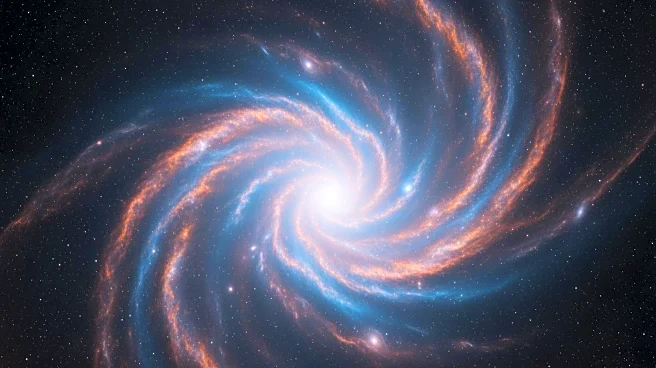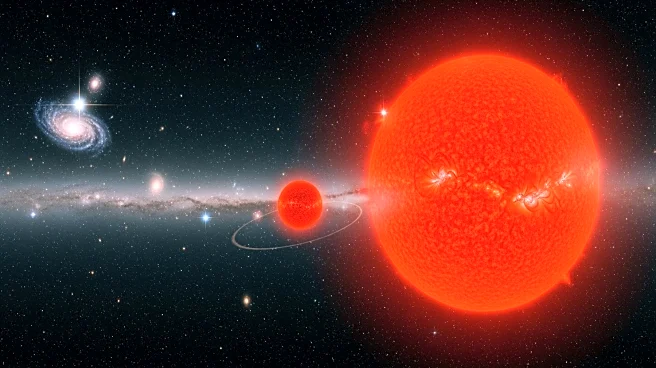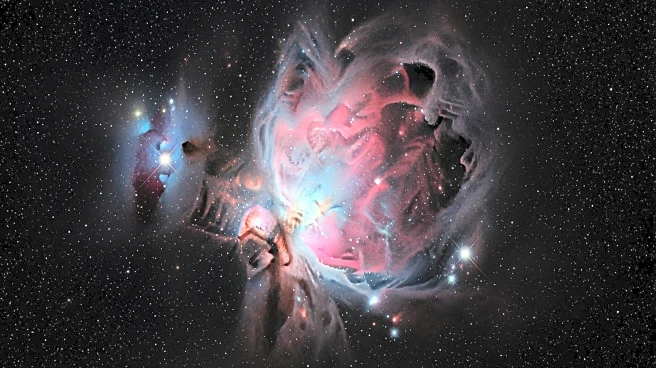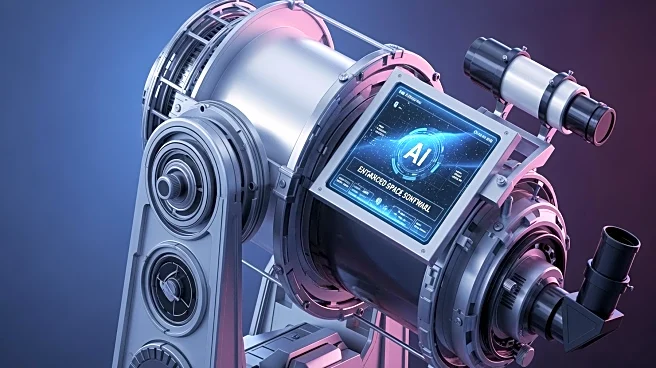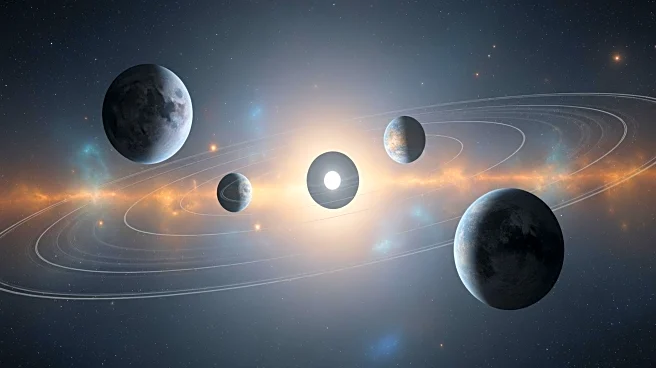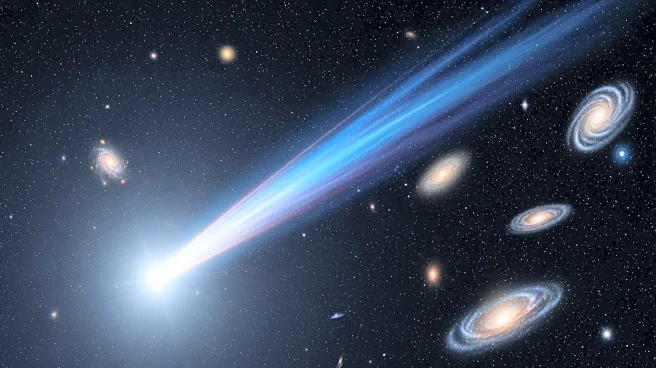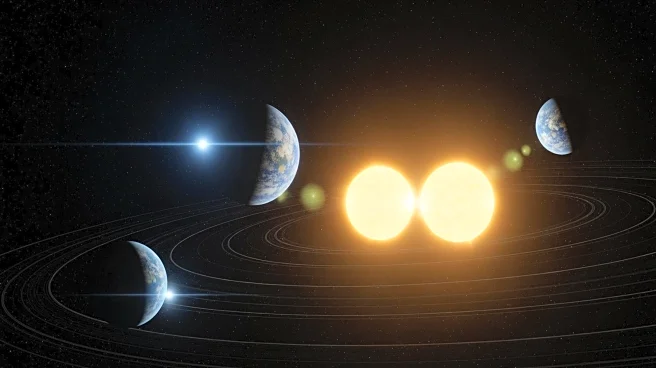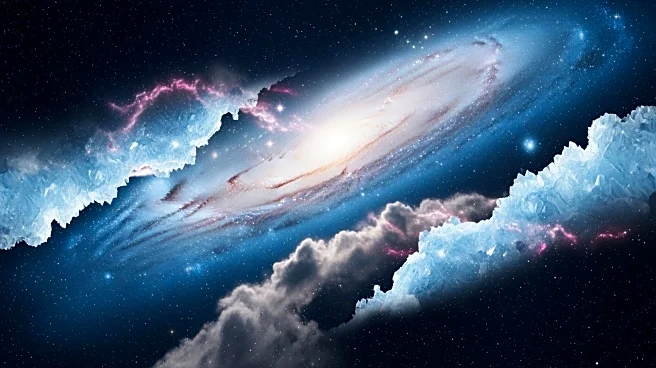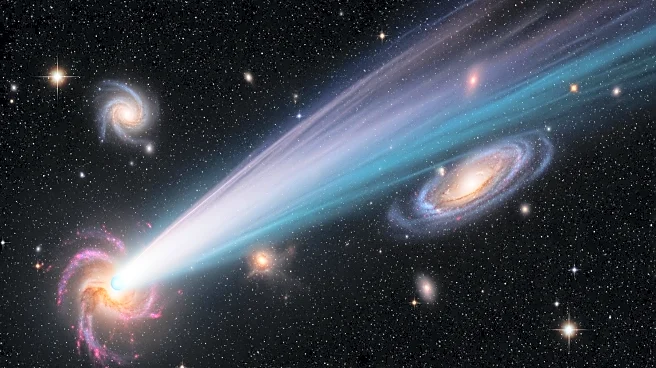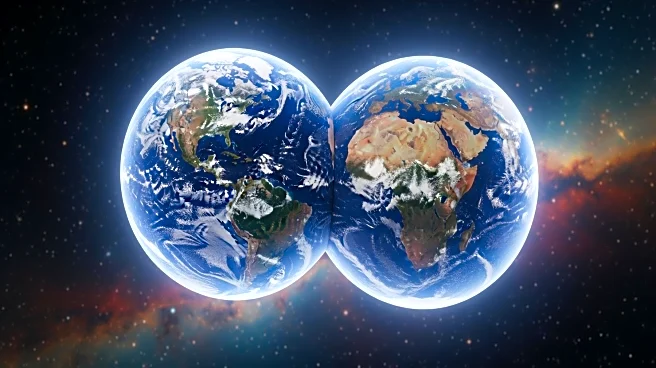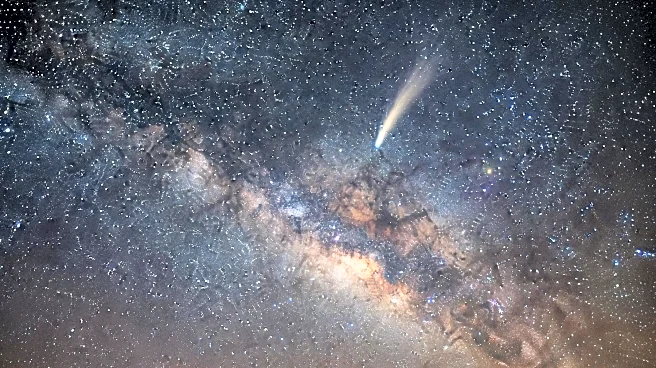What's Happening?
The James Webb Space Telescope (JWST) has provided detailed infrared images of Herbig-Haro object 49/50 (HH 49/50), an outflow from a protostar in the Chamaeleon I molecular cloud. This region, known for forming low-mass stars, is located about 625 light-years
from Earth. The JWST's observations revealed intricate arcs and emissions from hydrogen, carbon monoxide, and energized dust, generated by high-velocity jets from the protostar Cederblad 110 IRS4. These findings resolve previous uncertainties from Spitzer Space Telescope data, identifying a feature at HH 49/50's tip as a distant spiral galaxy.
Why It's Important?
The JWST's observations of HH 49/50 provide critical insights into the early stages of star formation, particularly in low-mass star-forming regions like Chamaeleon I. By capturing the infrared emissions from the protostar's jets, the JWST offers a clearer understanding of the dynamics and composition of such regions, which are typically obscured in visible light. This research enhances our knowledge of the processes that lead to star formation and the conditions that may influence the development of planetary systems. The discovery of a distant galaxy in the same field of view also highlights the JWST's capability to explore the universe's structure and evolution.
Beyond the Headlines
The JWST's ability to penetrate dust clouds and capture detailed images of protostars and their environments marks a significant advancement in astronomical research. This capability allows scientists to study the conditions under which stars and potentially habitable planets form, offering clues about the origins of our solar system and others. The findings also underscore the importance of infrared astronomy in uncovering hidden aspects of the universe, paving the way for future discoveries in star and planet formation.
